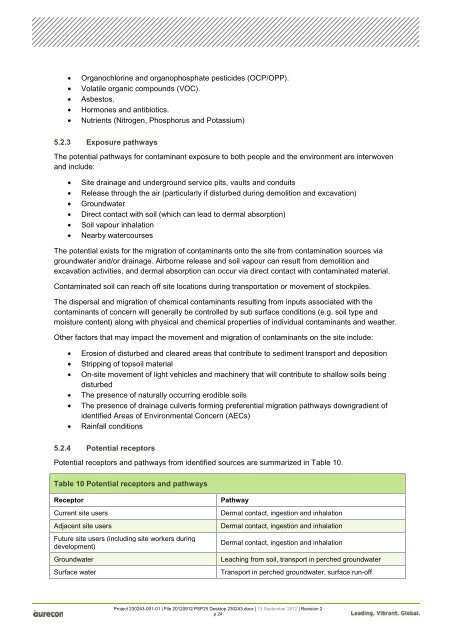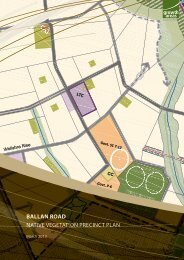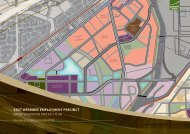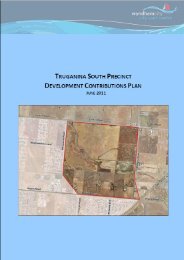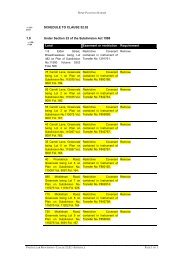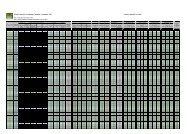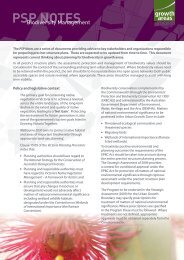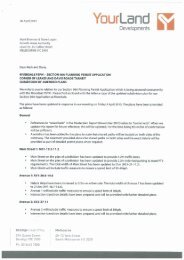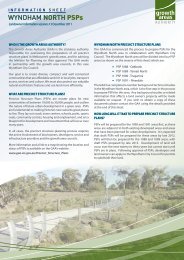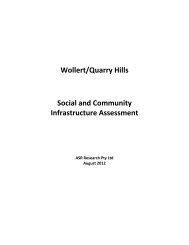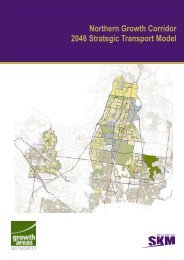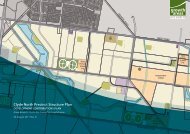Desktop Environmental, Hydrological and Geotechnical Study
Desktop Environmental, Hydrological and Geotechnical Study
Desktop Environmental, Hydrological and Geotechnical Study
You also want an ePaper? Increase the reach of your titles
YUMPU automatically turns print PDFs into web optimized ePapers that Google loves.
• Organochlorine <strong>and</strong> organophosphate pesticides (OCP/OPP).<br />
• Volatile organic compounds (VOC).<br />
• Asbestos.<br />
• Hormones <strong>and</strong> antibiotics.<br />
• Nutrients (Nitrogen, Phosphorus <strong>and</strong> Potassium)<br />
5.2.3 Exposure pathways<br />
The potential pathways for contaminant exposure to both people <strong>and</strong> the environment are interwoven<br />
<strong>and</strong> include:<br />
• Site drainage <strong>and</strong> underground service pits, vaults <strong>and</strong> conduits<br />
• Release through the air (particularly if disturbed during demolition <strong>and</strong> excavation)<br />
• Groundwater<br />
• Direct contact with soil (which can lead to dermal absorption)<br />
• Soil vapour inhalation<br />
• Nearby watercourses<br />
The potential exists for the migration of contaminants onto the site from contamination sources via<br />
groundwater <strong>and</strong>/or drainage. Airborne release <strong>and</strong> soil vapour can result from demolition <strong>and</strong><br />
excavation activities, <strong>and</strong> dermal absorption can occur via direct contact with contaminated material.<br />
Contaminated soil can reach off site locations during transportation or movement of stockpiles.<br />
The dispersal <strong>and</strong> migration of chemical contaminants resulting from inputs associated with the<br />
contaminants of concern will generally be controlled by sub surface conditions (e.g. soil type <strong>and</strong><br />
moisture content) along with physical <strong>and</strong> chemical properties of individual contaminants <strong>and</strong> weather.<br />
Other factors that may impact the movement <strong>and</strong> migration of contaminants on the site include:<br />
• Erosion of disturbed <strong>and</strong> cleared areas that contribute to sediment transport <strong>and</strong> deposition<br />
• Stripping of topsoil material<br />
• On-site movement of light vehicles <strong>and</strong> machinery that will contribute to shallow soils being<br />
disturbed<br />
• The presence of naturally occurring erodible soils<br />
• The presence of drainage culverts forming preferential migration pathways downgradient of<br />
identified Areas of <strong>Environmental</strong> Concern (AECs)<br />
• Rainfall conditions<br />
5.2.4 Potential receptors<br />
Potential receptors <strong>and</strong> pathways from identified sources are summarized in Table 10.<br />
Table 10 Potential receptors <strong>and</strong> pathways<br />
Receptor Pathway<br />
Current site users Dermal contact, ingestion <strong>and</strong> inhalation<br />
Adjacent site users Dermal contact, ingestion <strong>and</strong> inhalation<br />
Future site users (including site workers during<br />
development)<br />
Dermal contact, ingestion <strong>and</strong> inhalation<br />
Groundwater Leaching from soil, transport in perched groundwater<br />
Surface water Transport in perched groundwater, surface run-off<br />
Project 230243-001-01 | File 20120912 PSP25 <strong>Desktop</strong> 230243.docx | 13 September 2012 | Revision 2<br />
p 24


